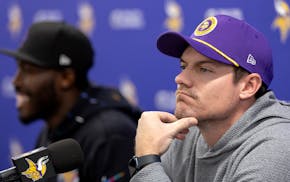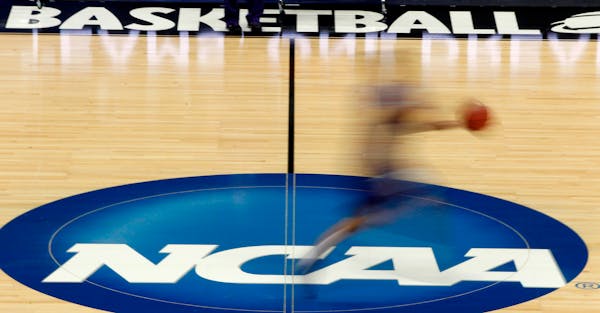The NIL Revolution | A Star Tribune series examining how the name, image and likeness era is transforming college sports: startribune.com/nil.
. . .
P.J. Fleck gave a lengthy answer earlier this week in explaining why his Gophers football team will not host a spring game. The most intriguing part was slightly cryptic.
"I want to keep things inside the best I possibly can keep things inside," he said.
News that the Gophers are scrapping the game — which is not uncommon for this program — caused some fans to wonder if Fleck is implementing changes to his offensive philosophy and doesn't want outsiders to see.
Possibly, but when it comes to anything related to collegiate athletics circa 2024, my inclination is to always follow the (NIL) money.
Is any decision not related to name, image and likeness these days?
Consider: Fleck has a new transfer quarterback, Max Brosmer, whom he likes a lot. And there are some young players who are expected to earn prominent roles. My hunch is that Fleck would rather not showcase those players on the Big Ten Network as an advertisement to other schools with deeper NIL pockets — especially with the next transfer portal window right around the corner, starting April 15.
That theory might sound paranoid, but NIL has turned paranoia into strategic planning because there are no rules in this game. Trust no one.
College sports haven't just changed in the past three years. The whole enterprise has been thrown into chaos. Relationships have become transactional. Athletes often sign both NLIs (National Letter of Intent) and NILs (endorsement deals) when they pick a school.
This is not an angry screed about college student-athletes getting paid. Athletes deserve to be compensated. It's true that NIL was long overdue. Also true: The current model is not sustainable.
The Wild West depiction of NIL is real. The NIL concept has morphed into a PFP (Pay For Play) reality, putting boosters and backers of every school in a financial vise that looks something like this: If fans don't give money to collectives to retain and recruit top players, the team will suffer on the field or court, leading to poor seasons, leading to coaching changes, leading to turmoil, leading to rival school success.
The spring transfer portal window for college basketball opened Monday, and you can bet the Gophers' official collective, Dinkytown Athletes, has been working to secure enough funds to fend off schools that might try to entice any of Ben Johnson's core players with a lucrative offer to transfer.
The guys who operate Dinkytown Athletes have done yeoman's work in closing the NIL gap between Minnesota and other schools, but I question whether fan contributions can keep pace with the costs of paying athletes.
That's probably not an issue for select schools with well-heeled boosters who delight in bank-rolling their favorite programs. But NIL is a Sisyphean undertaking for many schools, even those in major conferences. They are leaning heavily on Joe Fan, and there is a constant worry that no amount of fundraising will be enough.
The most logical solution is an idea proposed by NCAA President Charlie Baker that would allow schools to manage NIL deals directly with athletes and no longer keep it under the direction of third-party collectives. Let schools handle NIL in-house. That won't eliminate the disparity between the haves, have-nots and have-mores, but at least athletic departments could regain some control of the situation. Fundraising for NIL would fall under the department's umbrella.
Collectives could still help facilitate deals in partnership. Industry leaders also must figure out a system that funnels some of the massive revenue being generated from media rights agreements to athletes.
The NIL train is moving so fast that it's hard to know how things will look in two years. Coaches and school officials only look out as far as the next transfer window and hope their collectives have enough money to retain key players and fill roster spots.
That must be an exhausting ecosystem to live in. It is for fans.

Scoggins: Adofo-Mensah, O'Connell get Vikings reboot right in Year 3

Scoggins: Adofo-Mensah meets draft night challenge in a big way

Scoggins: Worried about costly trade to draft a quarterback? Don't be.
Scoggins: 'Wait one more year' can't be the Wild's plan. Thankfully, it isn't.


